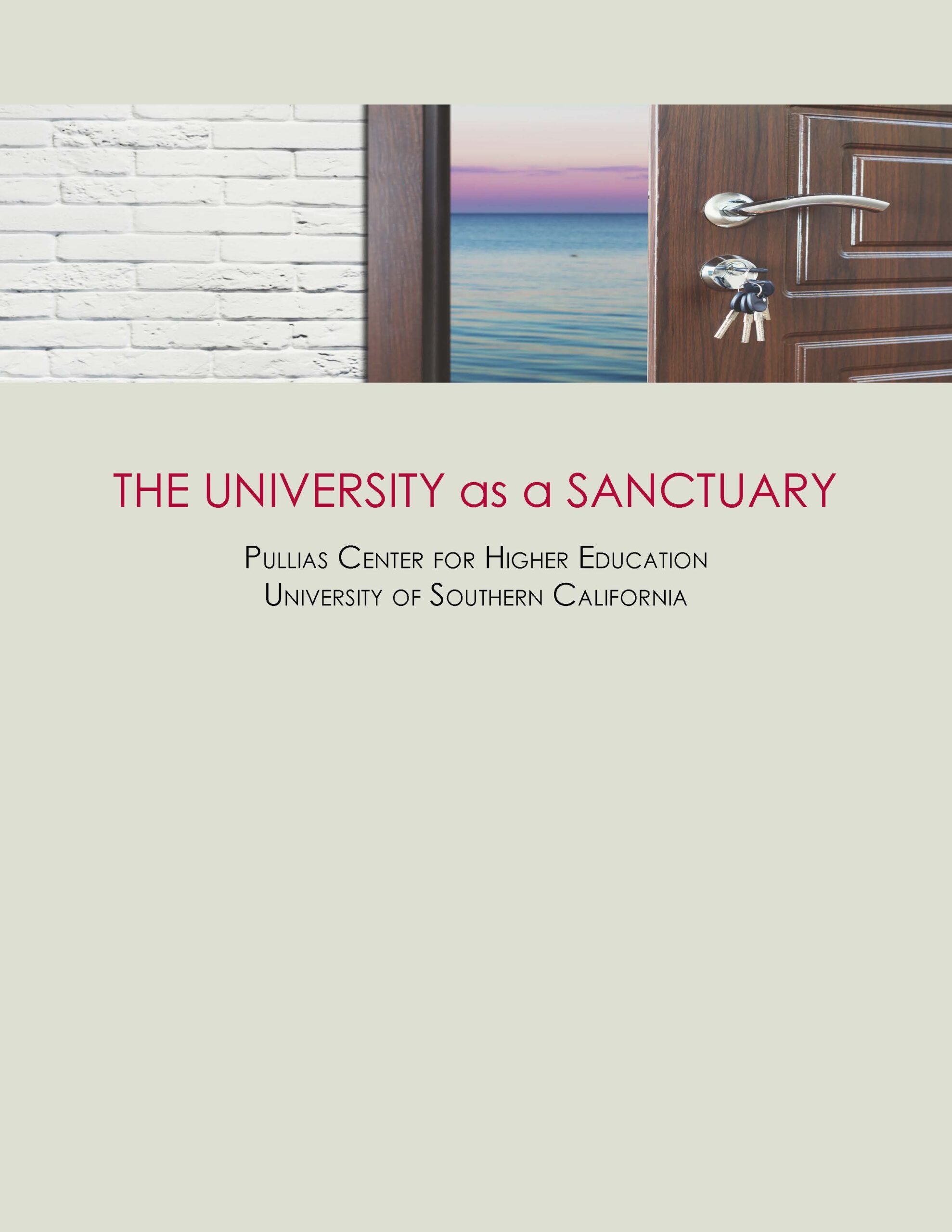The University as a Sanctuary

Soon after the election of Donald J. Trump as President-elect of the United States, many faculty,
students, and staff throughout the country campaigned to have their campuses designated as
“sanctuaries.” Although the concept of a sanctuary dates to the ancient Greek and Roman empires,
it has special historical significance for the United States. For decades, sanctuaries have offered a wide
range of individuals - including conscientious objectors to war and faith-based social activists - protection
from targeted political prosecution (Lippert, 2013). Nevertheless, the call for a college or university to
become a sanctuary is relatively new. The impetus for the call concerns President-elect Trump’s repeated
demand to reverse the Deferred Action for Childhood Arrivals (DACA) immigration policy and deport all
undocumented individuals from the United States. Approximately 730,000 individuals who have applied
and been approved for DACA are amongst those who might be deported (Hipsman, Gómez-Aguiñaga, &
Capps, 2016).







